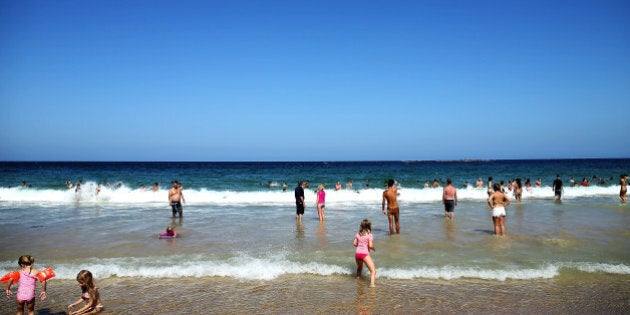
Put away your rake and woolly jumpers because it's not actually autumn yet. Not even close. Unless you think 18 days is close, in which case we suggest you turn up for a meeting 18 days late and see how that goes.
Here in Australia we start the seasons on the first of the month. It's a convenience thing, but it's not actually right. The 20th or 21st of the month (the day can vary) is when the seasons really change, and here's why.
It's all to do with the sun and the tilt of the Earth. You probably learned this stuff in school, but you probably learned quadratic equations and have forgotten how those work too, so here's a refresher.
Basically, the Earth does not sit upright. It's on a 23.5-degree tilt. That means that in the Australian summer, the southern hemisphere is tilted more towards the sun. More sunlight equals warmer weather.
The opposite happens in winter. With the earth having completed half its annual lap of the sun, the southern hemisphere is now tilted away from the sun. So obviously it's colder.
What's this got to do with it NOT ACTUALLY BEING AUTUMN YET?

Why are you even reading this story instead of lying on the beach with a hat over your face?
Well, as mentioned, the crossover happens around the 20th or 21st. That’s when the sun pretty much directly strikes the equator. And that’s when the seasons actually start to change. Which hasn’t happened yet.
Other countries recognise this. The USA, which is notoriously recalcitrant on the metric system, gets this one right. Seasons there begin on the 20th or the 21st. Here, the Bureau of Meteorology just draws a line on the 1st of the month. All of the Bureau’s climate-based statistics are based on seasons defined by months. As a BoM climatologist this reporter once interviewed said:
“We stick to calendar months because it works nicely for everybody.”
Which it does.
But when you think about it, the first three weeks of March are usually hotter than the first three weeks of December. Summer never really kicks in until just before Christmas and doesn’t let up until at least the middle of March. Cyclones and bushfires are also still common in March.

So basically, there’s no need to do whatever the hell this guy is doing.
Bottom line? Go to the beach, people. Frolic around in swimwear and keep your shorts in the top drawer. Summer ain’t over yet. In fact there’s every indication the warm weather will stick around until at least April in many areas.
And now, because we love weather tables, here are the average maximum temperatures for selected Australian cities in the warmer months.
As you can see, there’s not much difference in March. That’s because technically, the first three weeks of it are still summer.
Max temps by month
Melbourne
Dec 24.2, Jan, 26.0 Feb 25.8 Mar 23.9
Sydney
Dec 25.2, Jan 25.9, Feb 25.8, Mar 24.8
Canberra
Dec 26.1, Jan 28.0, Feb 27.1, Mar 24.5
Perth
Dec 27.4, Jan 29.7, Feb 30.0, Mar 28.0
Adelaide
Dec 27.2, Jan 29.4, Feb 29.5, Mar 26.4
Brisbane
Dec 28.1, Jan 30.2, Feb 29.9, Mar 28.9
Hobart
Dec 20.4, Jan 21.7, Feb 21.7, Mar 20.2
Never miss a thing. Sign up to HuffPost Australia’s weekly newsletter for the latest news, exclusives and guides to achieving the good life.
